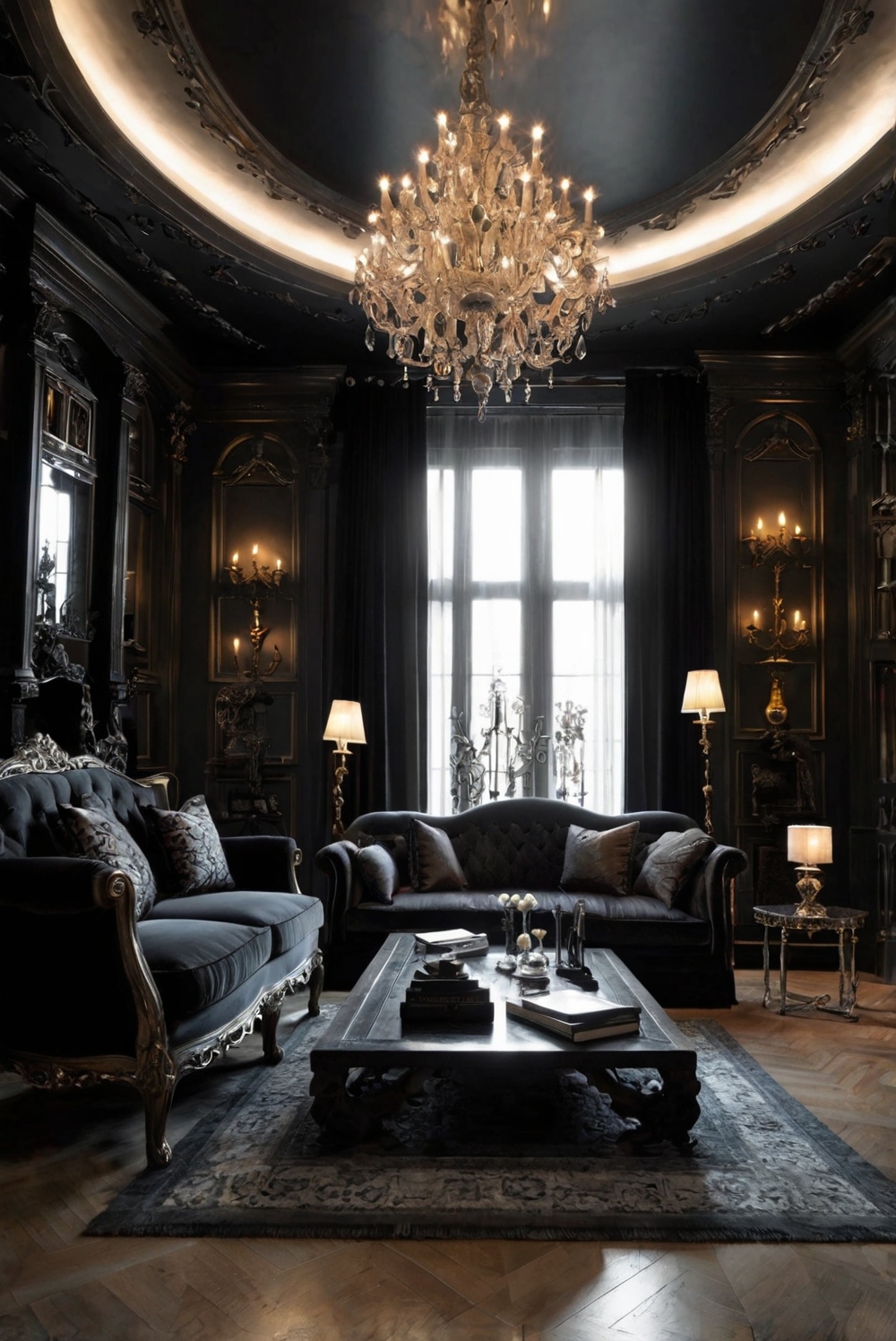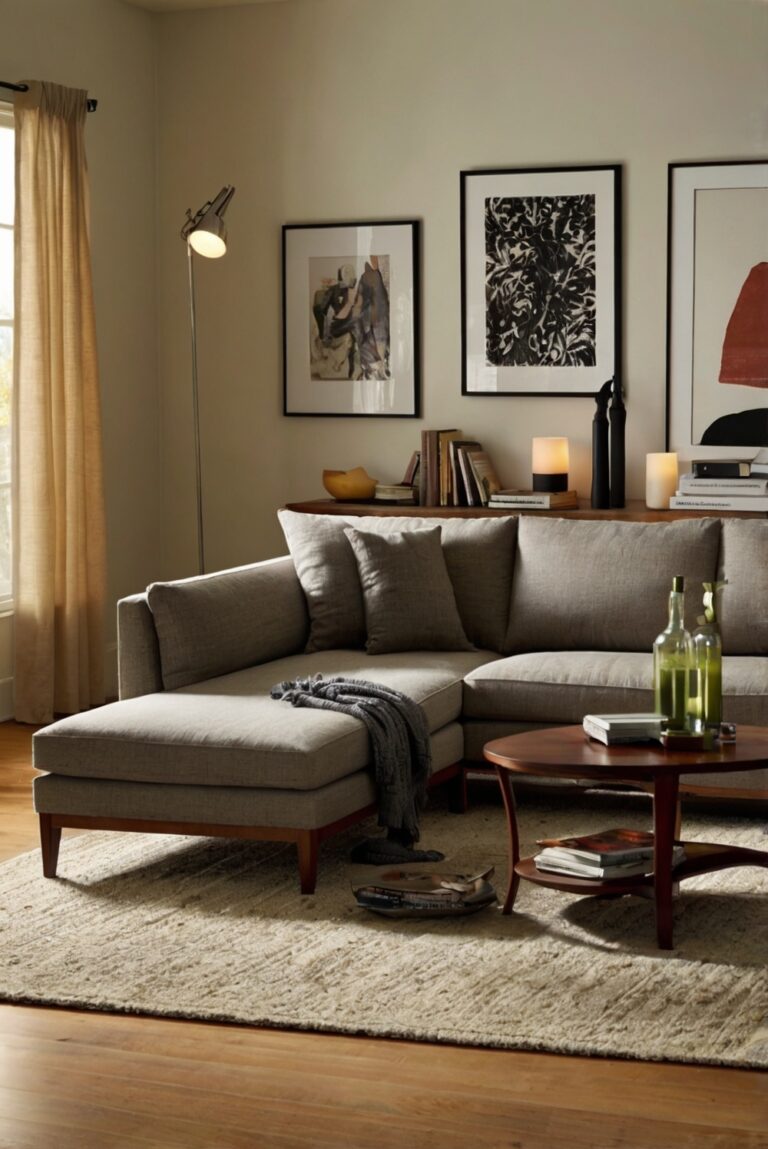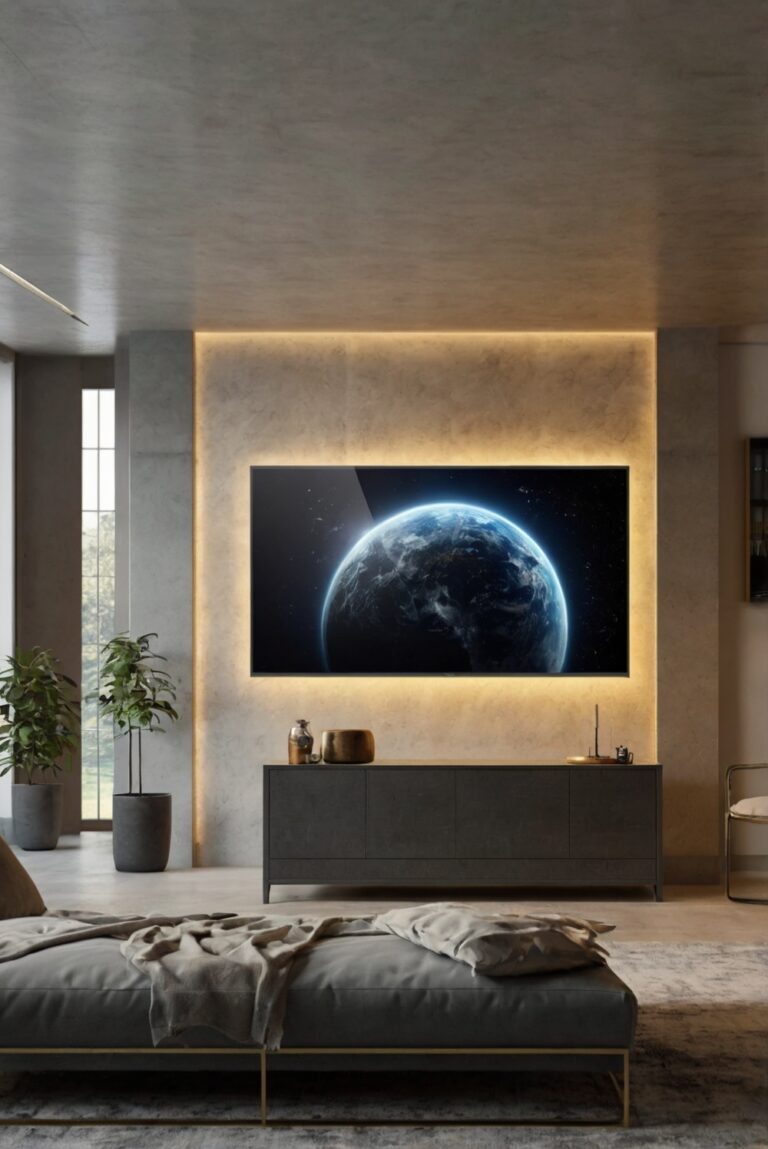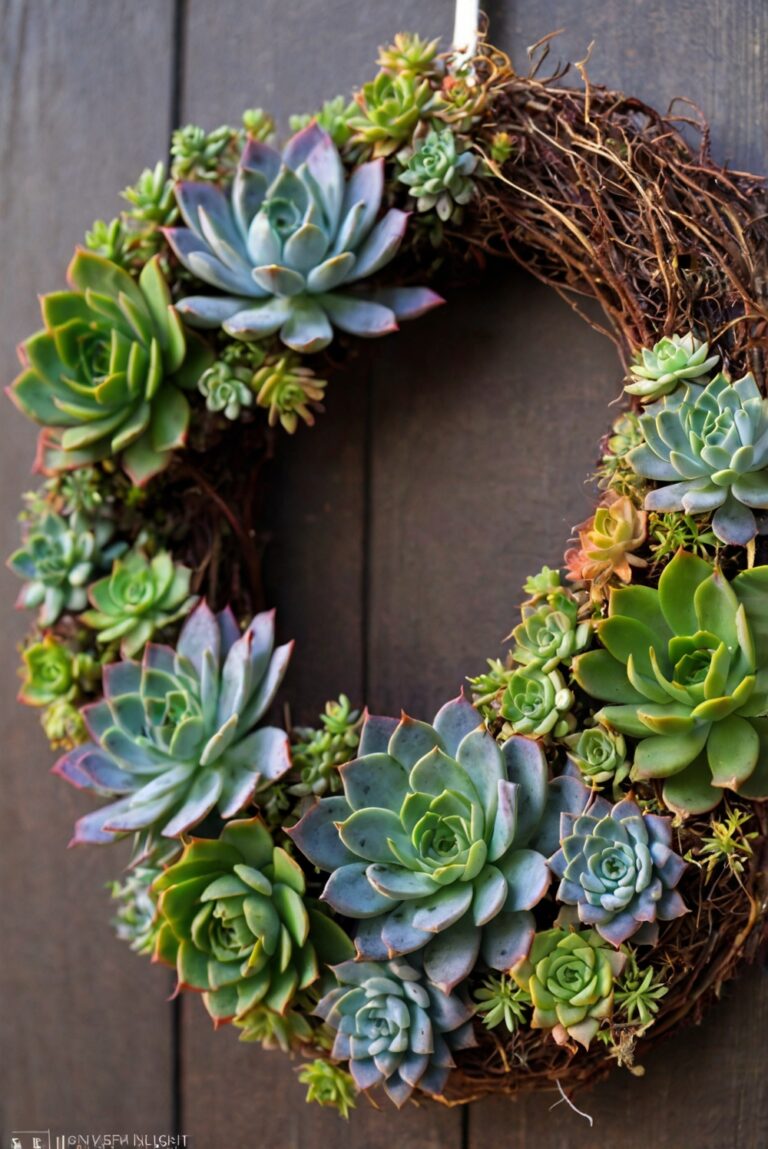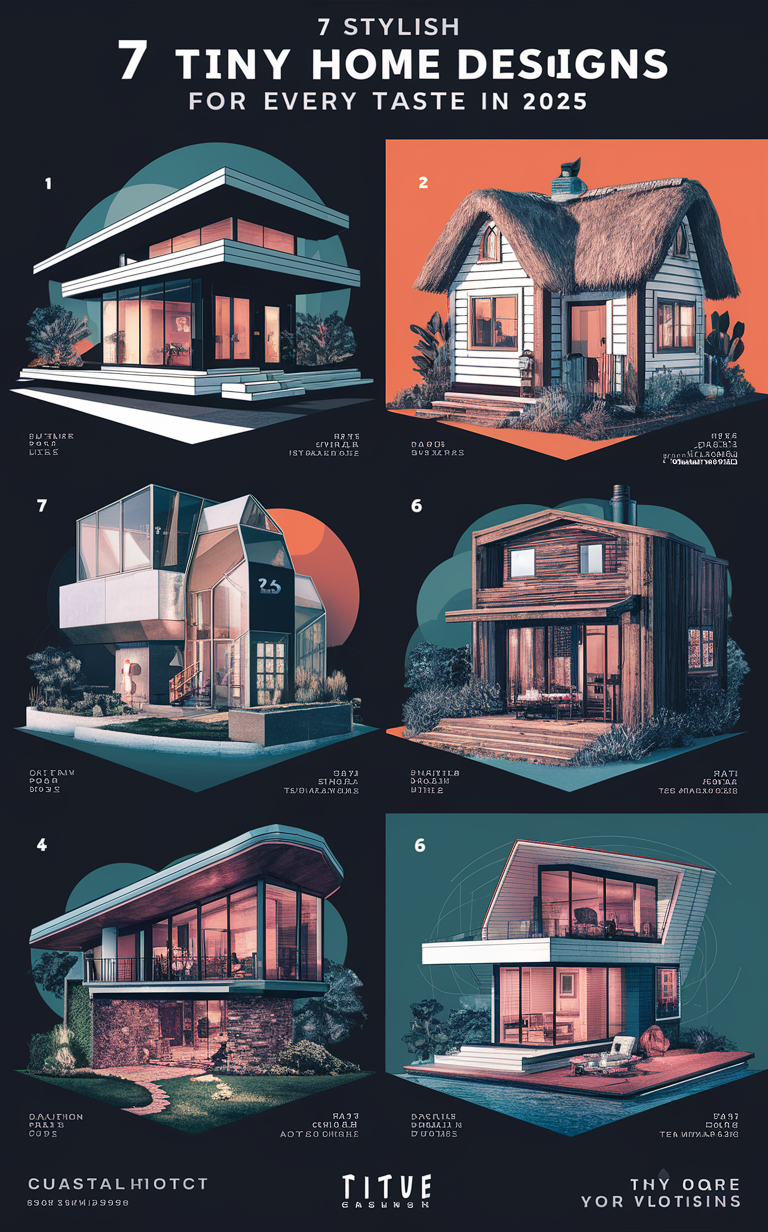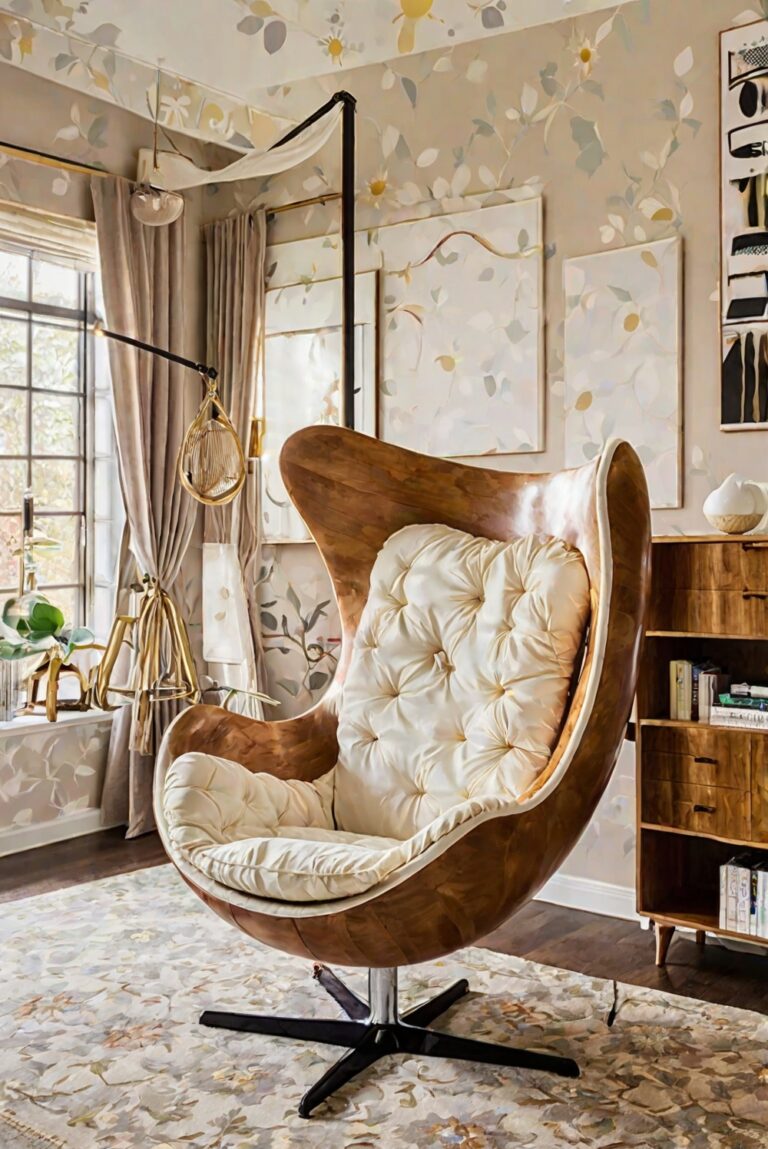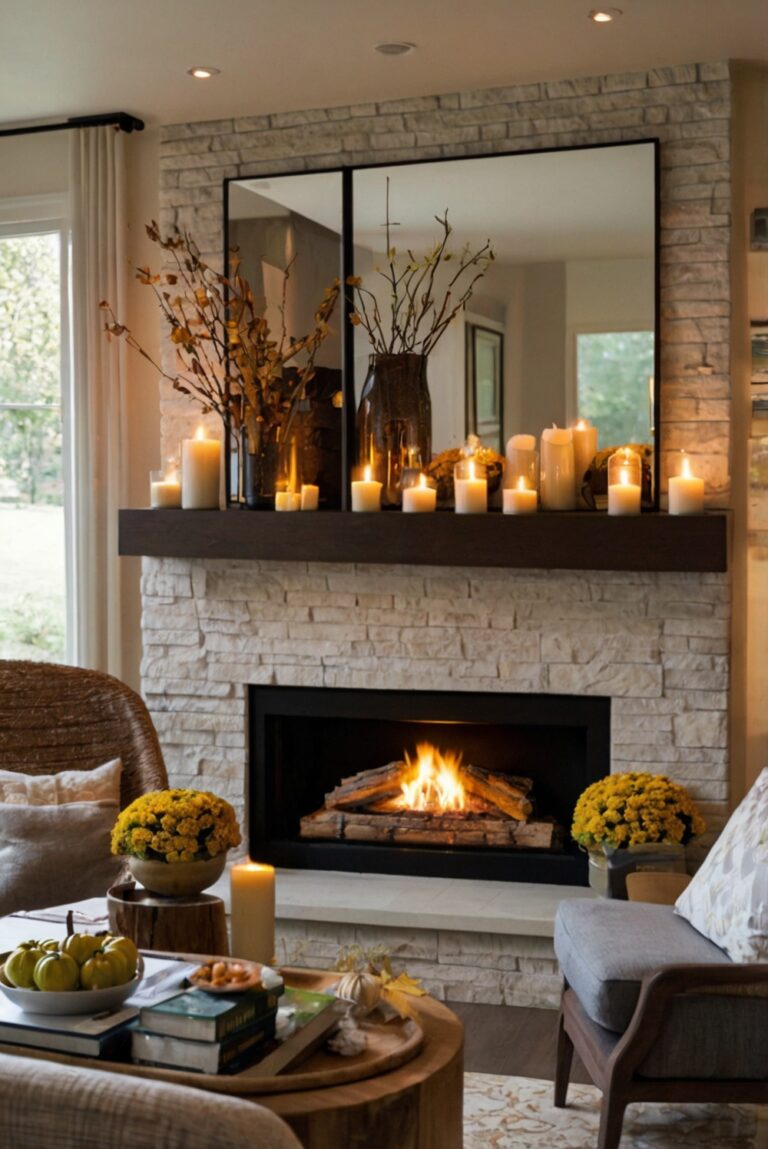Dive into Gothic living room design with 5 expert tips for dramatic flair.
# Gothic Living Room Design: 5 Tips for a Dramatic Look
Creating a gothic-inspired living room can be a bold and transformative design choice. Embracing the dark, moody aesthetic of gothic decor can add a sense of drama and sophistication to your space. In this guide, we will explore five key tips for achieving a dramatic gothic look in your living room.
## 1. Embrace a Dark Color Scheme
One of the hallmarks of gothic design is its use of deep, rich colors. To create a truly dramatic look in your living room, consider incorporating a dark color scheme. Black, deep purple, burgundy, and navy are all excellent choices for setting a gothic tone. You can paint your walls a dark color or opt for dark furniture and decor pieces to anchor the space.
## 2. Choose Gothic Furniture
Gothic furniture is known for its ornate details, intricate carvings, and dramatic silhouettes. To enhance the gothic aesthetic in your living room, look for furniture pieces that feature gothic-inspired elements. Think ornate chandeliers, velvet-upholstered sofas, dark wood coffee tables, and dramatic canopy beds. These pieces will add an air of opulence and grandeur to your space.
## 3. Incorporate Moody Lighting
Moody lighting is key to creating a gothic ambiance in your living room. Opt for dimmer switches or candles to create a soft, atmospheric glow. Chandeliers, sconces, and candelabras can also add a touch of drama to your space. Consider incorporating a mix of lighting sources to create depth and contrast in your gothic-inspired room.
## 4. Add Vintage Elements
Vintage elements can help enhance the gothic aesthetic in your living room. Look for antique mirrors, ornate picture frames, and vintage artwork to add a sense of history and mystery to the space. Old books, vintage rugs, and aged leather furniture can also help create a lived-in, gothic look. These elements can add character and richness to your gothic-inspired design.
## 5. Incorporate Intense Aesthetic and Dramatic Accents
To truly bring your gothic living room to life, focus on incorporating intense aesthetic elements and dramatic accents. Think dramatic draperies, luxurious textiles, and statement pieces that command attention. Bold patterns, intricate details, and rich textures can all help create a sense of drama and opulence in your living room. Consider incorporating gothic-inspired accessories like skulls, candelabras, and vintage trinkets to add a touch of mystery and intrigue to the space.
In conclusion, achieving a dramatic gothic look in your living room involves embracing a dark color scheme, choosing gothic furniture, incorporating moody lighting, adding vintage elements, and incorporating intense aesthetic and dramatic accents. By following these tips, you can create a space that is both elegant and theatrical, bringing a touch of gothic glamour into your home.
1. **Why are Gothic living room ideas so popular?**
Gothic living room ideas have gained popularity due to their unique and dramatic design elements. The Gothic style is known for its dark color scheme, opulent textures, and intense aesthetic, creating a striking and luxurious atmosphere. Many people are drawn to the moody lighting, vintage elements, and dramatic accents that define Gothic decor. The combination of rich colors, ornate furniture, and intricate details in Gothic living rooms adds a sense of mystery and sophistication to the space, making it a popular choice for those looking to create a bold and dramatic interior design.
2. **How can you incorporate dramatic design into a Gothic living room?**
To achieve a dramatic design in a Gothic living room, focus on dark color schemes such as deep purples, blacks, and dark reds. Choose Gothic furniture with ornate details, rich fabrics, and intricate patterns to add a sense of opulence to the space. Incorporate moody lighting fixtures like chandeliers, sconces, and candles to create a mysterious ambiance. Vintage elements such as antique mirrors, tapestries, and artwork can enhance the Gothic aesthetic. Use dramatic accents like velvet drapes, gilded frames, and elaborate trimmings to complete the look and add a touch of luxury to the room.
3. **What are some key elements of Gothic decor?**
Key elements of Gothic decor include dark color schemes, opulent textures, intense aesthetic, and dramatic accents. Dark colors such as black, deep red, purple, and dark green are commonly used in Gothic decor to create a sense of mystery and drama. Opulent textures like velvet, silk, and brocade add a luxurious touch to the space. The intense aesthetic of Gothic decor is characterized by ornate furniture, intricate details, and rich fabrics that evoke a sense of grandeur. Dramatic accents such as gargoyle figurines, candelabras, and gothic arches help to enhance the Gothic theme and create a visually striking interior design.
4. **How can you create a dark color scheme in a Gothic living room?**
To create a dark color scheme in a Gothic living room, start by choosing rich, deep colors like black, burgundy, navy blue, and dark purple for the walls, furniture, and decor. Incorporate dark wood furniture with ornate carvings and details to add a sense of Gothic drama to the space. Use dark-colored fabrics such as velvet, silk, and brocade for upholstery, curtains, and throw pillows to create a luxurious and moody atmosphere. Accentuate the dark color scheme with metallic finishes like gold, silver, or bronze for a touch of opulence. Consider adding pops of contrasting colors like red, gold, or emerald green to create visual interest and depth in the room.
5. **How can you incorporate vintage elements into a Gothic living room?**
To incorporate vintage elements into a Gothic living room, look for antique furniture pieces such as ornate Victorian sofas, baroque armchairs, and Gothic-style tables. Add vintage accessories like old-fashioned clocks, candelabras, and vintage mirrors to enhance the Gothic aesthetic. Display vintage artwork such as oil paintings, tapestries, and sculptures to create a sense of history and elegance in the space. Incorporate vintage textiles like lace, damask, and embroidered fabrics for curtains, upholstery, and throw pillows to add a touch of old-world charm. Mixing modern elements with vintage pieces can create a unique and eclectic Gothic living room design that is both stylish and timeless.

